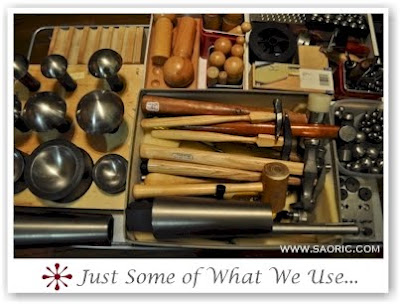Or, Why can similar looking pieces have widely different costs?
Part 1
To kick off our occasional series of posts about jewelry and the jewelry business, I wanted to talk about a question we hear quite a bit at Saori C. Jewelry Designs – “I see lots of earrings and necklaces on different sites that look very similar. How come some of them are much more expensive than others?”
The short answer is, in all honesty, “you get what you pay for.”
The long answer, and what I want to start talking about today, is that there are a lot of factors, including the labor involved in the piece, the quality and scarcity of the materials, the difficulty of the design, and the brand itself.
Let's talk about labor first, as how much (or how little) labor goes into a piece is one of the easiest things for a jeweler to control, and in many cases, one of the hardest things for customers to notice. A good example of this is the difference between “handmade” and what I like to call “hand-assembled.”

“Handmade” means exactly what the word implies – made by hand. If you tell me that your necklace is handmade, then I expect that everything, from the chain to the clasp, was made (forged, hammered, soldered, whatever) by you. “Hand-assembled” is different. If you went out and bought the clasp, the chain, the bangles, etc., mass-produced from a store somewhere, and then just put them together to make a necklace, that’s “hand-assembled,” and that’s quite different. To be fair, very few pieces of jewelry are entirely “handmade,” as most of us aren’t out mining and cutting our own gemstones or refining our own gold and silver, but the degree of “handmade-ness” greatly impacts both the time it takes to make a piece, and the skill and resources (i.e., cost) required to do it. That, as you might imagine, can have a large influence on the final price.
As some jewelers these days use “handmade” when they really should say “hand-assembled,” it’s important for customers to be able to recognize the differences between the two. We’ll look at some of those differences in our next post. Stay tuned!


No comments:
Post a Comment